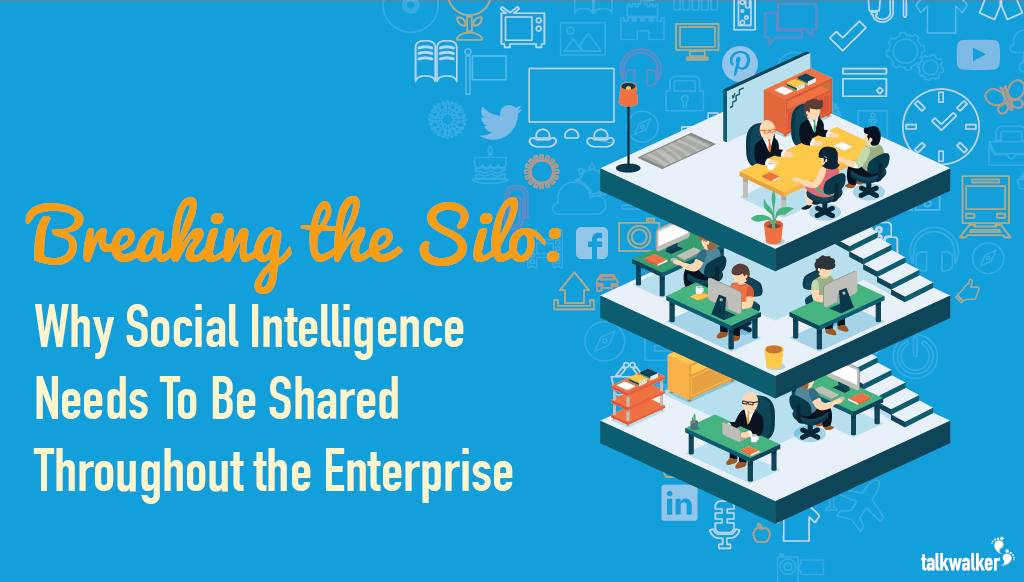

For companies of all sizes, sharing knowledge between departments is a challenge.
Information that could be of use to multiple departments – from Marketing and Customer Support to PR and Risk – can easily get stuck, preventing businesses from performing at full capacity.
Social data is particularly susceptible to getting stuck in “siloes” due to common perception that social data is only of use to social media and marketing departments.
Our latest report looks to dispel this myth and explain why and how social intelligence should be shared across the enterprise.
Here are a few key points from the report:
SOCIAL DATA ISN’T JUST FOR SOCIAL MEDIA TEAMS

There is a tendency for many companies to believe that social data is only useful for marketing and even just social media teams. Many of our clients come to us with a similar mentality to begin with before quickly discovering the wide range of insights that social data can provide.
Social intelligence can help with product development by helping food brands for example identify customer preferences for flavors by tracking keywords and sentiment, to identifying key vulnerabilities and threats by monitoring uses of “crisis” words like “fraud” “scandal” or “security failure”.
Used effectively, social data can help multiple departments and as a source of unfiltered public opinion it is difficult to compare to insights attained through other more traditional research methods.
SHARING SOCIAL INTELLIGENCE BREAKS THE SILO MENTALITY

The silo mentality – where departments within a business operate as separate entities rather than part of one unit – can prevent businesses from using all the assets at their disposal.
It’s a common problem, particularly in large companies that have multiple departments all with differing goals and priorities. Most businesses can see the value in sharing knowledge between these departments but actually putting this into action can be more difficult.
As a data source that can be used across many departments, social intelligence can help to overcome this problem. Advanced social intelligence platforms allow multiple teams to simultaneously use the platform, creating a social data hub where all departments can find and share insights uncovered from social data. By creating a hub-spoke system like the graphic below, businesses can not only get more out of social intelligence, they can also create a knowledge sharing network that helps different departments to collaborate.

EXAMPLE OF A SOCIAL INTELLIGENCE NETWORK THAT SPREADS KNOWLEDGE TO EACH DEPARTMENT
THE KEY COMPONENTS OF A SOCIAL INTELLIGENCE HUB

To create an effective social intelligence network the social data hub in the middle needs to have several key features.
Flexibility – The hub should be customizable to meet each departments needs and have a wide range of analytics to provide relevant insights to each team. The capability to integrate with other software solutions is also important as social insights can then be combined with internal company data to find even more actionable insights.
Open with Good Data Coverage – With so much data to monitor, data coverage is a key element especially as different teams may need different data sets. Having an open platforms means that teams can add in specific data streams as required.
Reporting – Simple, intuitive reporting functions allow teams to share knowledge more effectively. Having automated reporting functions that can operate in real-time helps to further streamline this process.
Ease of Use – Different teams will have different levels of competency when it comes to working with data. Social intelligence hubs must therefore be easy enough to use for those with little background in data and flexible enough to provide enough options for experts.
With millions of social media posts, blogs and online news articles being published every hour across the globe, the volume of potential insight lying within this mass of data is almost incalculable. By instilling the right mentality, the right framework and by choosing the right social intelligence platform, every department in a business can use this data to their advantage and, in the process, improve collaboration within departments.
[Source:- socialmediatoday]

